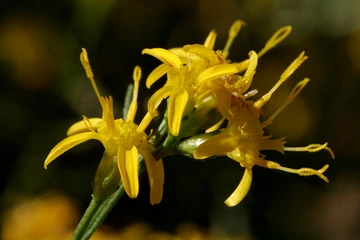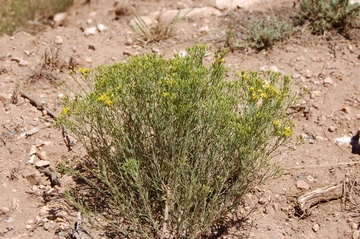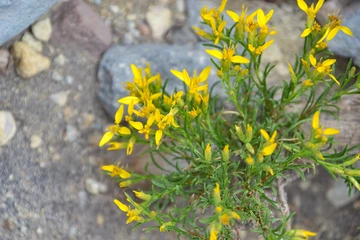Common snakeweed (also known as snakeweed, broomweed, broom snakeweed, matchweed, threadleaf) is a short-lived, native, perennial shrub or subshrub that grows from 8 to 28 inches in height. It flowers August to October and reproduces from seeds. Maximum life span is approximately 20 years. It grows on arid and semi-arid sites. Can be confused with rabbitbrush.
Toxicity is typically observed in plants growing on sandy soils, during periods of limited rainfall and dry conditions, or during conditions of rapid plant "green up". Since snakeweed is drought tolerant, and is readily available during dry conditions, the cattle may chose it as preferred browse over other non-toxic forage choices. The toxic agent is saponin, and is considered a secondary absorber of selenium which is toxic. Toxin is soluble in milk so nursing calves may be the first to show signs or symptoms.
Jump To:
Affected livestock
Cattle, sheep and goats are all impacted.
Symptoms
Listlessness, nasal discharge with crusting, anorexia/weight loss, rough hair coat, diarrhea followed by constipation, blood noticed in urine stream, degeneration and necrosis of the liver, mild jaundice or yellowing of skin and the white of eyes, and kidney failure. Pregnant cows may have edema of uterus and possibly fetal membranes, swelling of the vulva, swelling and earlier-than-normal udder development, and abortion usually with a retained placenta.
Diagnosis
Contact veterinarian if any of the above symptoms occur. Test for selenium poisoning.
Prevention
Remove affected livestock from area and consult with your veterinarian. Provide
supportive care as directed by veterinarian.
Avoid overgrazing rangelands. Ensure palatable forage and water is available at all times. Snakeweed can be treated with herbicide if applied during early growth stage of the plant.




